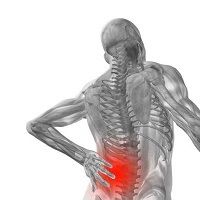Article
Interventional Pain Management Faces Major Challenges
Author(s):
Interventional pain management-the field of helping patients with acute or chronic pain without doing major surgery--is a both a growing specialty and one that is under assault. As the annual meeting of the American Society of Interventional Pain Physicians got underway in Orlando, FL today, group leaders outlined the organization's political agenda.

Interventional pain management—the field of helping patients with acute or chronic pain without doing major surgery--is a both a growing specialty and one that is under assault.
At the annual American Society of Interventional Pain Physicians (ASIPP), organization leaders and outside supporters urged the group’s 4,300 members to become grass-roots lobbyists and work toward what they said are continuing threats to their livelihood, particularly the ability of pain physicians to be independent practitioners.
“We’re not needle jockeys and we’re not running pill mills,” said Harold Dalton, DO, president of the Florida Society of Interventional Pain Physicians, kicking off the annual meeting of the group, held this year in Orlando, FL, “We are doing right for our patients.”
The group’s immediate agenda is to reverse reiumburse cuts to epidural pain-management procedures, adjust CPT codes to reflect the costs of providing service, work to assure that the Medicare Sustained Growth Rate (SGR ) fix is passed by the US Senate, and to fight changes in ICD-10 codes that would have a negative impact on the profession. The group has already beat back a plan by the US Food and Drug Administration to issue a warning that epidural procedures can cause serious injuries, one the group's members say is groundless.
The epidural procedure cuts are particularly onerous since these therapies comprise one of the most frequently performed office-base pain management procedures and since that affects the 40% of the group’s members who work in small or solo independent medical practices.
On the broader horizon, said Ramsin Benyamin, MD, ASIPP plans to continue to encourage members to do research and write papers for publication in medical journals.
“We need more meaningful research,” Benyamin said, as a way to enhance the field's prestige and credibility.
Several sessions at the meeting are dedicated to instructing members in how to design studies and submit papers for publication.
Reimbursement by Medicare has dropped sharply, he and other speakers said. In 2013 Medicare paid $347 for a cervical or thoracic epidural. In 2015 that payment was $201.
The group has lobbied Congress heavily to get payments restored, and convinced officials at the Centers for Medicare and Medicaid Services that making reiumbursement too low would force office-based practitioners to stop doing epidural pain blocking procedures with the result that hospitals would be the only place for patients to get them—and at a higher cost.
“It would cost Medicare $50 million to $100 million,” Benyamin said.
Many of the patients they treat are old and sick and “on a million meds,” he said. These patients are vulnerable and need individual attention. It’s no time to be cutting reimbursement for the physicians who provide this care.
“It’s a difficult time,” for the profession, Benyamin said, “We are working 20% harder and getting paid 20% to 30% less.”
Meanwhile, group members’ contributions to ASIPP's much-needed lobbying effort have fallen off, to an all-time low of $90,124 in donations last year, he noted in asking members to consider monthly contributions to the group’s political action committee. An annual $5,000 contribution would put a member in "diamond" category, but any amount would be welcome. “We take plastic now,” he said.



